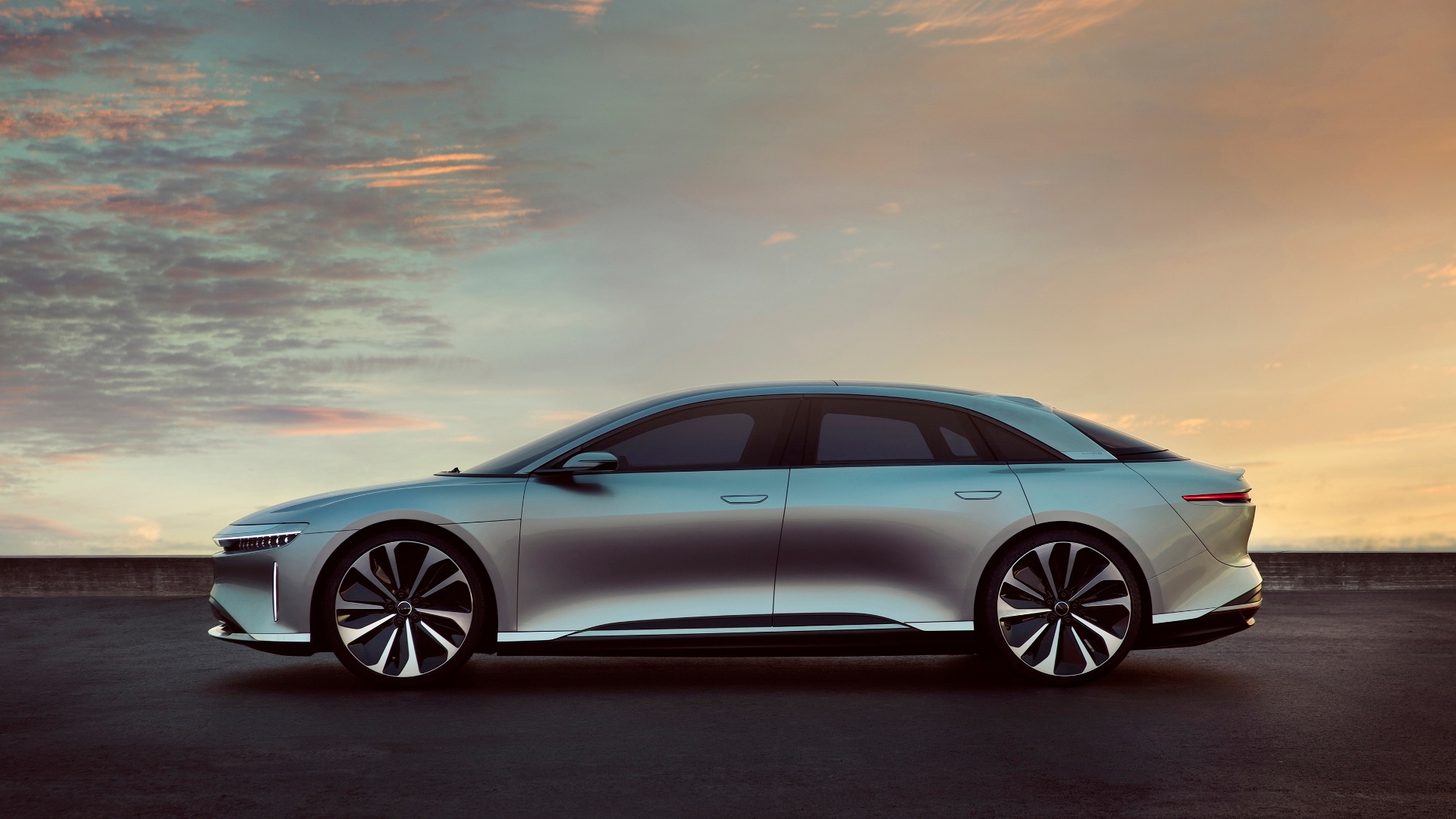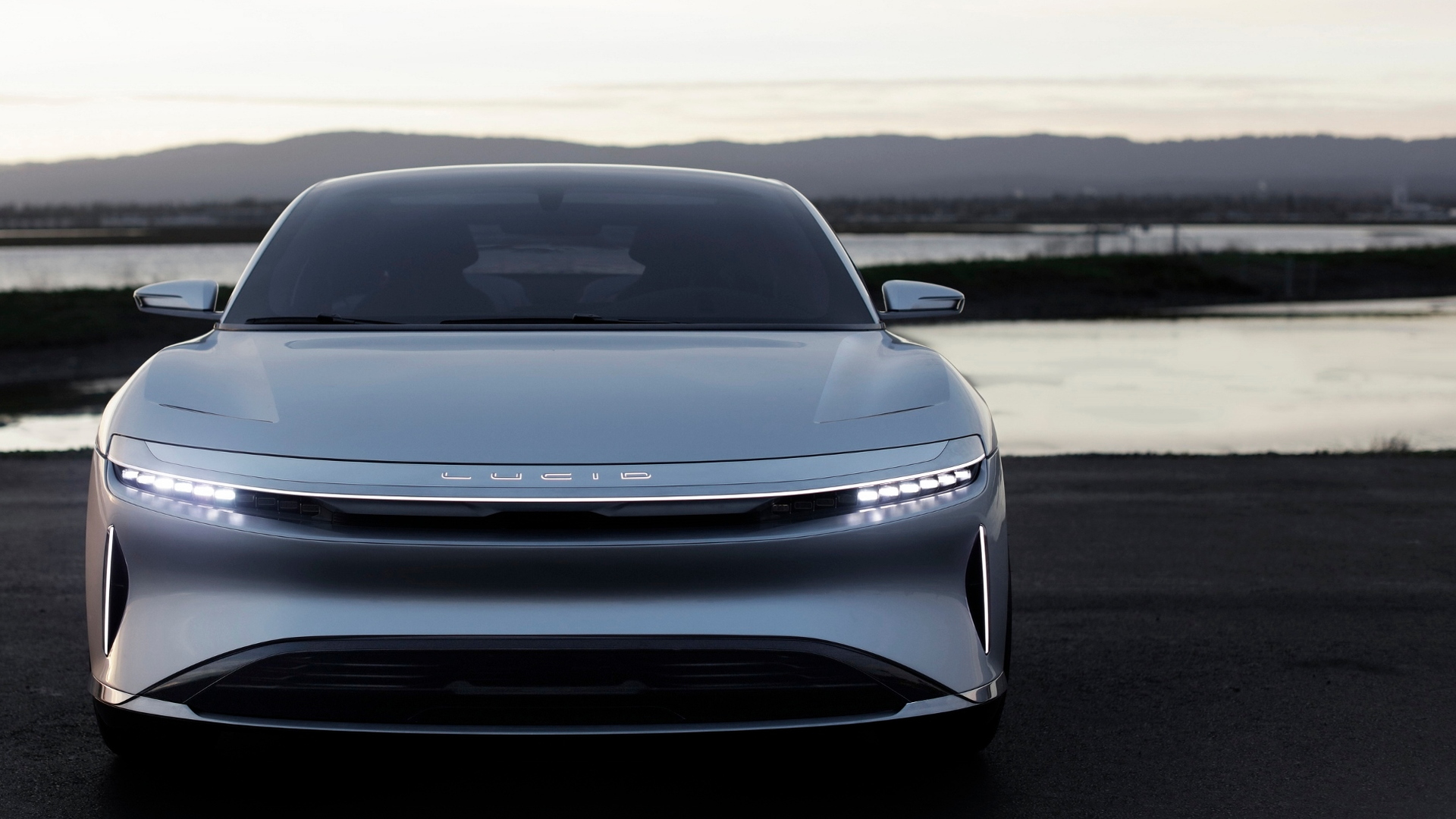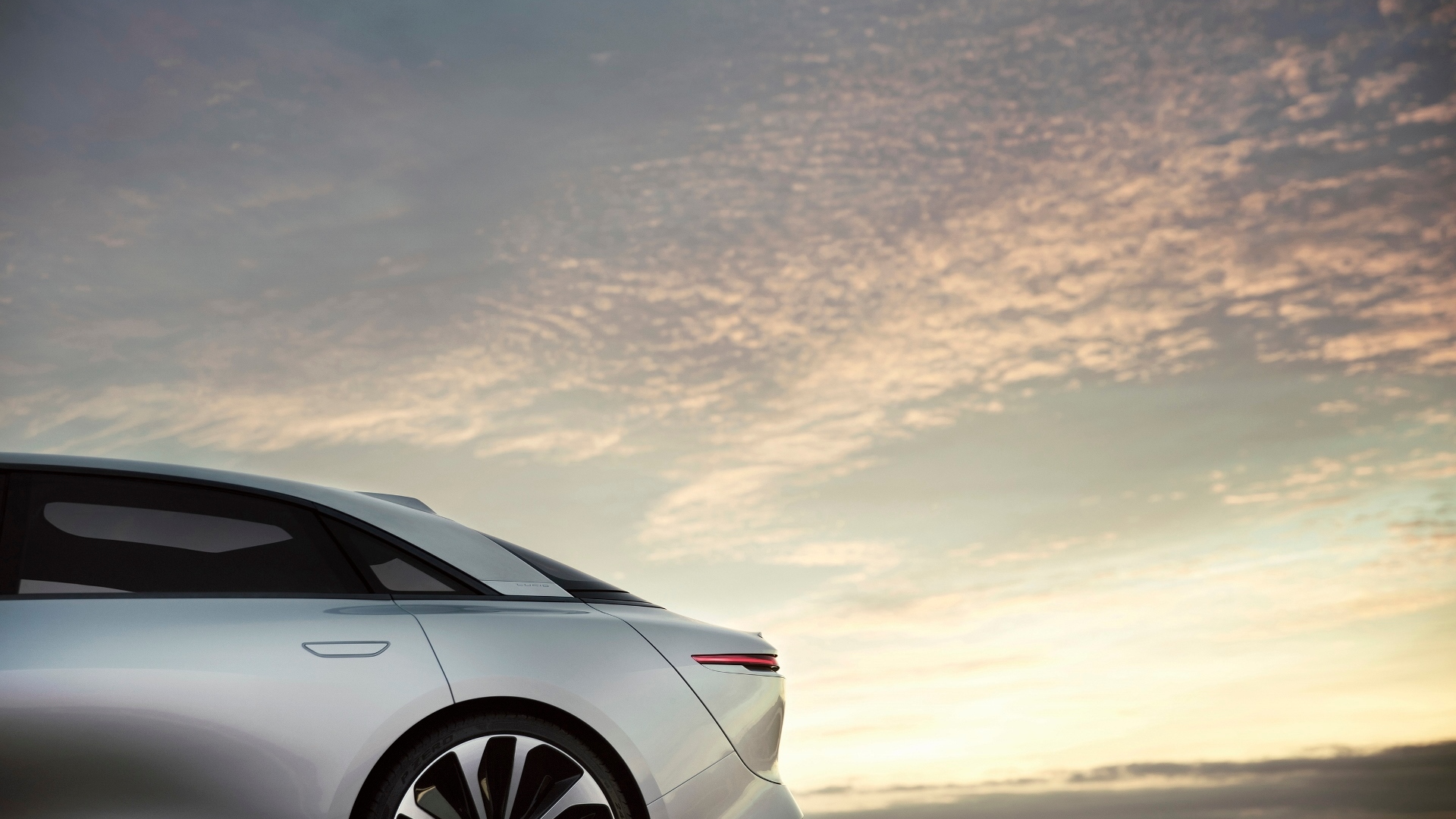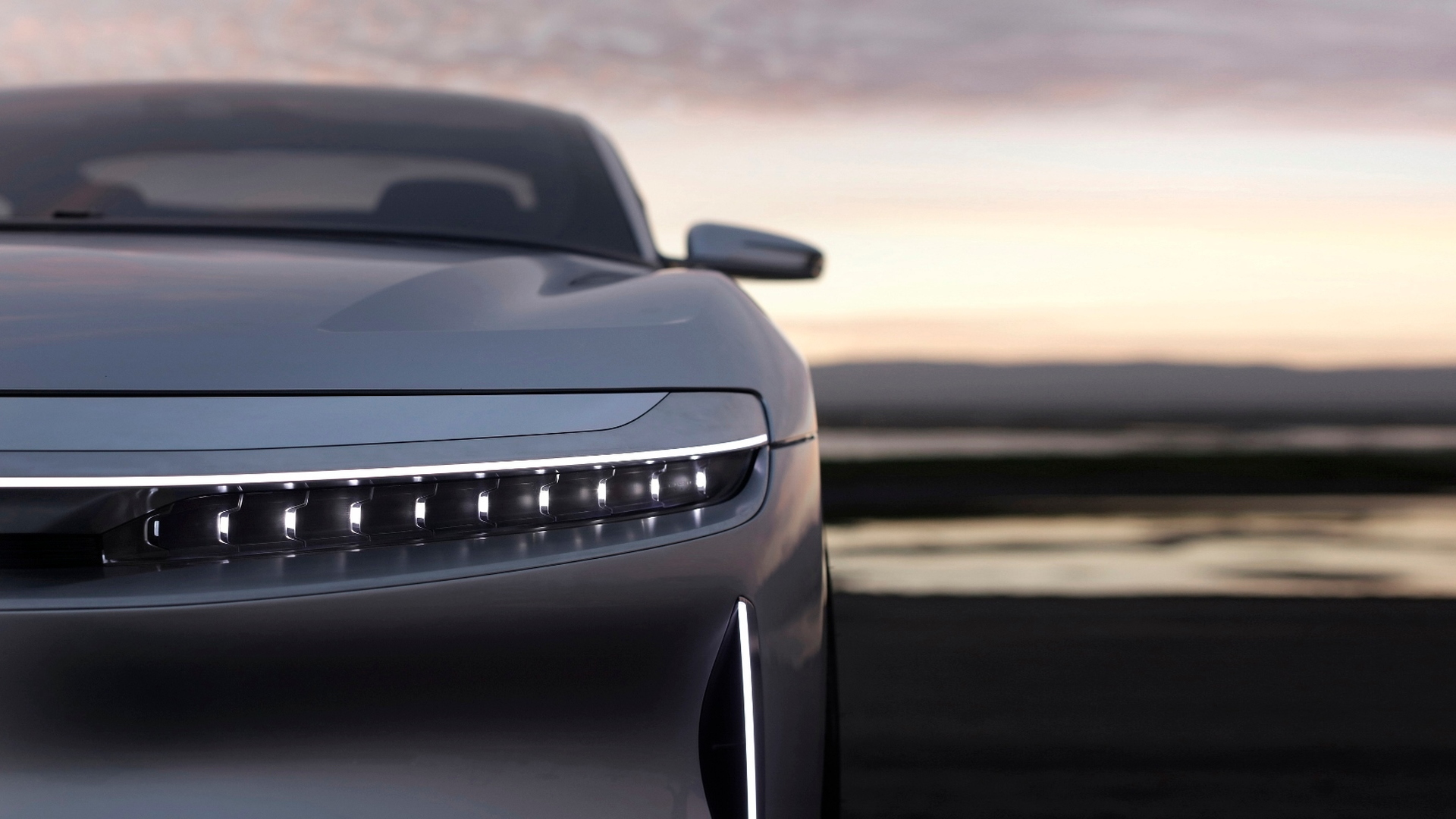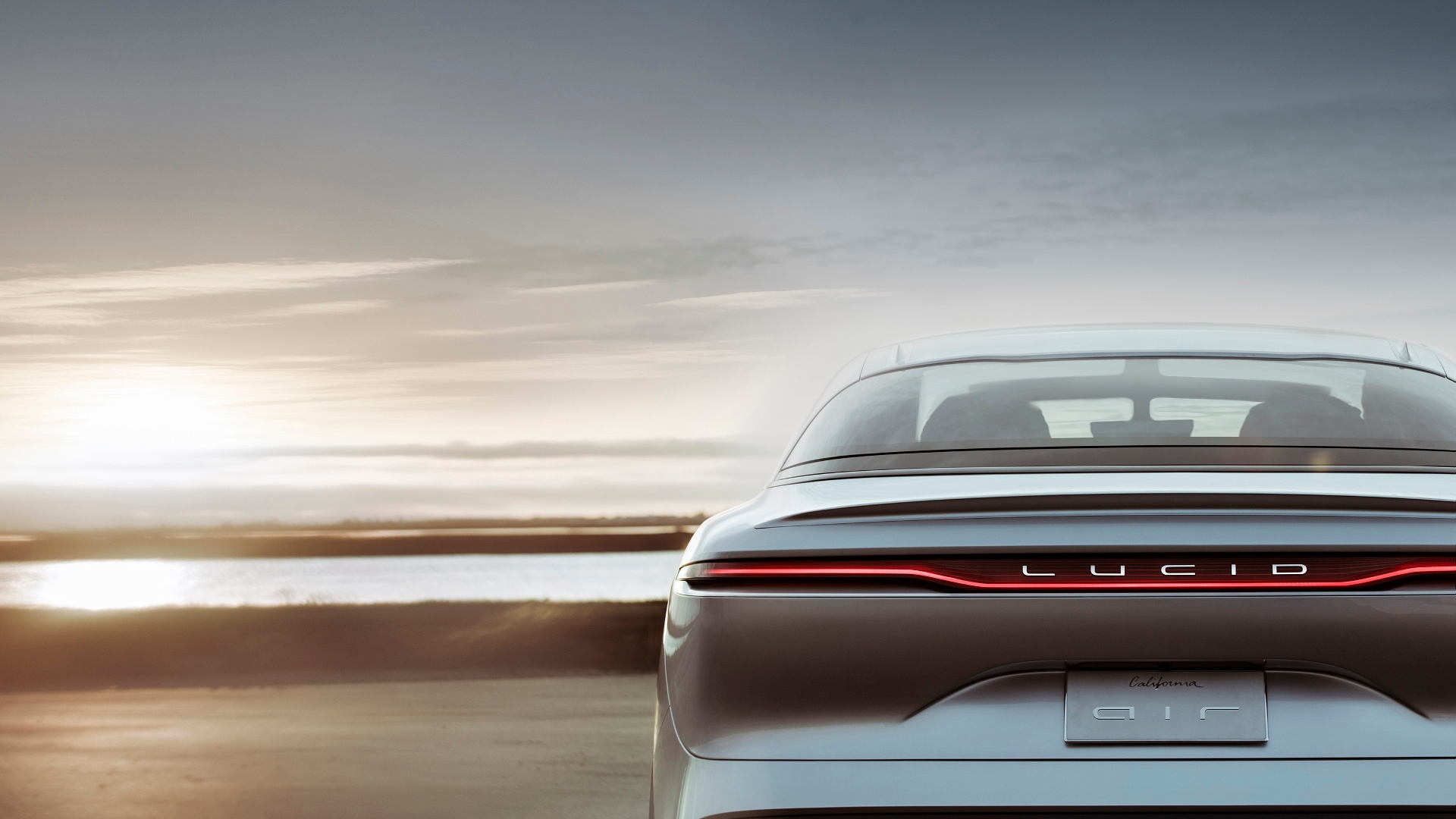California’s Lucid Motors Tuesday provided first details regarding its advanced driver-assistance system, called DreamDrive, for its upcoming Air electric luxury sedan.
“Taken as a whole, DreamDrive signals Lucid’s intent to deliver sophisticated assisted driving capabilities in its vehicles,” said the company in a release.
It’s an intent that, upon looking at the hardware and Lucid’s plans for upgradability, hints at future capabilities that have the potential to outshine Tesla’s Autopilot, GM’s Super Cruise, or Ford’s Active Drive Assist—and, perhaps, to be smoother and more reliable than Tesla’s Navigate on Autopilot ability set.
From a very cursory, top-level view, the Lucid DreamDrive system will differ from Tesla’s Autopilot system in two key aspects that some customers will see as invaluable: It uses lidar, and will have privacy controls.
Altogether, Lucid claims that it will have the first electric vehicle that’s offered with an advanced camera/radar sensor suite, a high-resolution lidar system, a driver-monitoring system, and a fully redundant platform.

Lucid Air ADAS sensor
The system includes 32 sensors in all, and claims to be the first ADAS system built on a high-speed Ethernet Ring. It backs up the steering, brakes, and sensors, with “redundant independent power sources and communications paths, fail-operational actuators, and fault-tolerant computation.”
Lucid says that it worked with the suppliers Continental and Bosch, as well as Here (for mapping and telematics), although the integration for the systems was done entirely in-house.
The company had previously partnered with Mobileye, which supplied the earlier Hardware 1 sensor set for Tesla’s Autopilot system. But it confirmed to Green Car Reports that while it’s not announcing its lidar partner at this time, Mobileye is not involved in the revamped system for the production-bound Air.
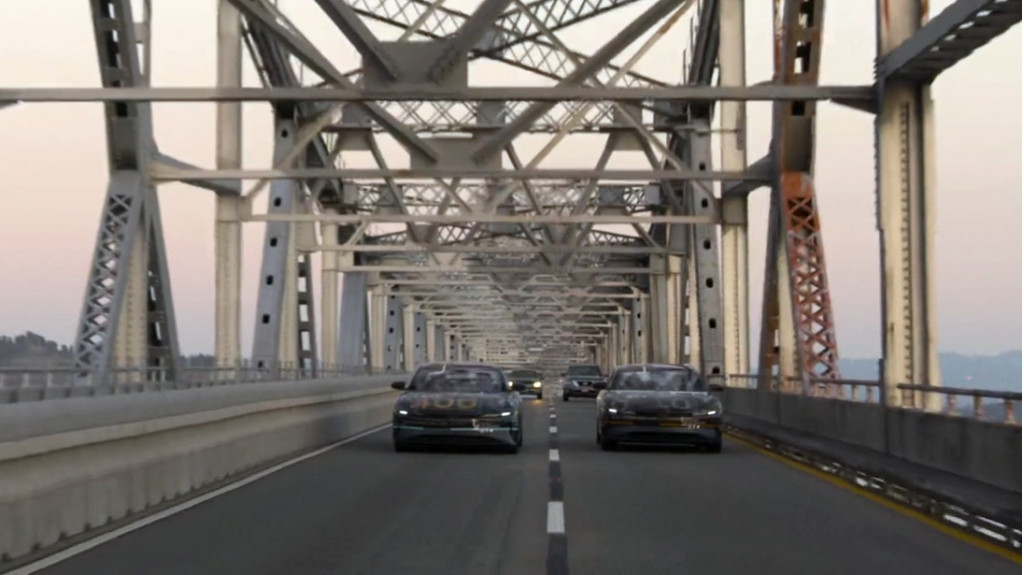
Lucid Air range test video - Richmond San Rafael Bridge
Lucid’s earlier plan also involved real-time mapping and learning through aggregated data logging—a strategy that sounds a lot like that of fellow Silicon Valley EV maker Tesla. Lucid declined to say whether that remains part of the strategy but said that it will have more to share about the Air’s “stringent privacy controls” closer to the model’s launch.
Dr. Eugene Lee, Lucid’s senior director for advanced driver-assistance systems (ADAS) and autonomous driving, said that DreamDrive has been developed to be “among the most advanced ADAS to ever be offered to consumers.”
Lee, who formerly oversaw autonomous vehicle development at Hyundai and spearheaded the development of Super Cruise at GM, explained to Green Car Reports: “Lucid chose to include lidar in its sensor suite for Level 2+ ADAS not just because it’s the optimal technology for long-range sensing, but also because it adds a high level of redundancy to the sensor suite overall.”
According to Lee, the lidar the company has chosen extends to 150 meters, with a relatively wide field of view, “so it captures a tremendous amount of data and allows for an increased level of safety in assisted driving modes.”

Lucid Air
DreamDrive's three sensing modalities—cameras, radar, and lidar—are supplemental to each other and provide redundancy in the system.
“Lucid incorporated lidar technology into its ADAS and AD sensor suite because we want to minimize any potential misperception by other sensors such as camera and radar,” said Lee.
There have been some examples—relatively few, but noteworthy—in which Tesla vehicles with Autopilot engaged crashed into objects that the camera-based system allegedly failed to process early enough to avoid a collision.
The hardware and software platform behind DreamDrive will support 19 distinct features at the start of Lucid Air production—including traffic-sign recognition, a distracted/drowsy driver alert, full-speed adaptive cruise control with lane centering, and autonomous parking assist—and Lucid says that it will add another eight features to the Air via over-the-air updates.
The Air, which will be assembled in Casa Grande, Arizona, is due for a debut on September 9, 2020, when the company has said that it will offer more information about specs, pricing, and other details. First deliveries are due in early 2021.
